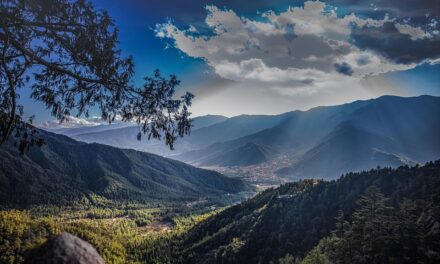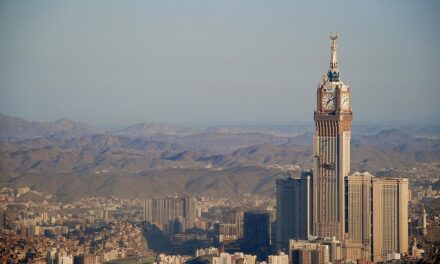Nestled in the turquoise embrace of Southeast Asia, East Timor, also known as Timor-Leste, is an enticing yet underrated destination. As one of the world’s youngest nations, East Timor boasts a unique blend of ancient history, unspoiled natural beauty, and vibrant culture. For travellers yearning to escape crowded tourist hotspots, this small but diverse nation offers an unforgettable experience.
Did you know that East Timor is home to pristine coral reefs, tropical forests, and dramatic mountains? Or that it harbours Portuguese-influenced towns and ancient tribal traditions? Read on for an eye-opening guide to this incredible destination. Whether you’re an adventure seeker, cultural enthusiast, or beach lover, this comprehensive travel guide will help you unlock the wonders of East Timor and make your trip truly memorable.
Table of Contents
- Introduction to East Timor
- Fascinating Facts About East Timor
- Top Travel Spots You Can’t Miss
- Dili – The Vibrant Capital City
- Atauro Island – Snorkelling Paradise
- Mount Ramelau – A Hiker’s Dream
- Jaco Island – A Hidden Sanctuary
- Baucau – Colonial Charm Meets Nature
- Insider Travel Tips for East Timor
- Cultural Etiquette and Essential Dos & Don’ts
- Best Activities in East Timor
- FAQs About Travelling to East Timor
Introduction to East Timor
East Timor, or Timor-Leste, lies at the eastern end of the Indonesian archipelago, separated from Australia by the Timor Sea. This enchanting country gained independence in 2002, following years of colonisation and political struggles, making it one of the youngest countries on Earth. With diverse landscapes, warm-hearted locals, and a fascinating mix of traditional and colonial influences, East Timor is truly a gem waiting to be discovered.
Here’s the catch—unlike popular tourist hubs like Bali or Phuket, East Timor remains relatively untouched by mass tourism. This makes it an excellent choice for travellers seeking authenticity and off-the-beaten-path adventures.
Fascinating Facts About East Timor
Before diving into the best spots and insider tips for travel, let’s explore some intriguing facts about East Timor:
- Independence Day: The country became fully independent on 20th May 2002.
- Languages: While Tetum and Portuguese are official languages, English and Indonesian are widely understood, especially in urban areas.
- UNESCO Sites: East Timor has an incredible cultural tapestry, including sacred houses called “Uma Lulik.”
- Biodiversity Heaven: The nation boasts marine biodiversity ranking among the best in the world, making it a diving hotspot.
- Currency: Fun fact—East Timor uses the US Dollar as its official currency.
Top Travel Spots You Can’t Miss
1. Dili – The Vibrant Capital City
Dili is the heart and soul of East Timor. Offering a blend of the past and modern-day life, Dili is where travellers should begin their journey. Start at the Cristo Rei statue, an iconic landmark standing over the city, reminiscent of Brazil’s Christ the Redeemer. For history buffs, the Resistance Museum sheds light on the country’s resilience during its independence struggle.
Stroll along the waterfront Esplanade for views of the Timor Sea, or visit Tais Market, a treasure trove of traditional woven textiles. Dili’s friendly atmosphere will set the tone for a memorable adventure.
Key tip: Hire a guide to delve into East Timor’s independence history, which adds depth to your exploration.
2. Atauro Island – Snorkelling Paradise
Situated just 25 kilometres from Dili, Atauro Island is a snorkeller’s and diver’s paradise. The underwater world here is teeming with coral reefs, colourful marine life, and even dolphin pods. It’s also one of the most biodiverse marine areas globally!
Stay with local families through eco-friendly homestays to enjoy the laid-back island vibe. You’ll also find hiking trails and fishing villages that provide insight into rural Timorese life.
Hot tip: Visit during the dry season (May–October) to experience the island’s vibrant coral life at its best.
3. Mount Ramelau – A Hiker’s Dream
For trekkers and adventure lovers, climbing Mount Ramelau (also known as Tatamailau) is a must. At 2,986 metres, it’s East Timor’s highest peak and offers jaw-dropping sunrise views. The trek feels spiritual, passing shrines and untouched forests.
Many locals hike to the top as part of religious pilgrimages, so this hike also has a deep cultural connection. Starting the climb at midnight allows you to reach the summit at dawn. The panorama of the surrounding mountains and clouds is simply surreal.
4. Jaco Island – A Hidden Sanctuary
Looking for an island escape? Jaco Island, located on the eastern tip of East Timor, is a dream come true. Untouched and uninhabited, the island is a protected area with crystal-clear waters, white sand beaches, and coral fringes. Accessibility is limited, which adds to its exclusivity and charm.
Pack everything you need upfront because amenities are minimal. Ferries or small boats can take you across the water, opening the gates to tropical bliss.
Note: Some locals won’t step foot on Jaco Island, as it is considered sacred in Timorese culture.
5. Baucau – Colonial Charm Meets Nature
Baucau, East Timor’s second-largest city, feels like stepping into a time capsule. With Portuguese-era colonial buildings, it encapsulates the Old World charm, set against the backdrop of lush hills and a warm coastal breeze.
Baucau’s natural attraction lies in its Venilale caves—a must-visit for history enthusiasts interested in local WWII stories. Don’t forget to explore the town’s natural springs and lively markets too!
Insider Travel Tips for East Timor
- Getting Around: Roads in East Timor can be rough, so renting a sturdy 4WD is recommended. Hiring a local driver is also an option for less stress.
- Health Precautions: Ensure you’re vaccinated for common tropical diseases, and bring mosquito repellent. Healthcare facilities are basic in rural areas.
- Currency Use: The US Dollar simplifies transactions, but always carry small denominations for convenience.
Cultural Etiquette and Essential Dos & Don’ts
- Dress modestly, especially in rural and sacred areas.
- Always ask for permission before taking photos of locals or sacred sites.
- Remember, East Timorese people are warm but respectful. Show interest in their language and traditions to leave a positive impression.
Best Activities in East Timor
- Diving and Snorkelling: From Atauro Island to Jaco Island, the waters are an aquatic wonderland.
- Traditional Festivals: Participate in local celebrations such as flag-raising ceremonies on Independence Day.
- Volunteering Opportunities: Support community projects if you’re staying for an extended time.
FAQs About Travelling to East Timor
1. Is East Timor safe for tourists?
Yes, East Timor is generally safe. However, normal precautions, such as avoiding isolated areas at night, are recommended.
2. What’s the best time to visit?
The dry season (May to October) is ideal for outdoor activities and marine exploration.
3. Can I use ATMs in rural areas?
ATMs are mainly available in Dili. Rural areas may require cash, so plan ahead.
East Timor is a destination that balances adventure, culture, and tranquillity seamlessly. With its rich history, stunning landscapes, and untouched charm, it promises a journey like no other. Use this guide to make your travel plans smooth and fulfilling.
For more curated travel content, check out Nihosi, your go-to hub for global adventures.











Subscribe To Our Newsletter
Join our mailing list to receive the latest news and updates from our team.
You have Successfully Subscribed!